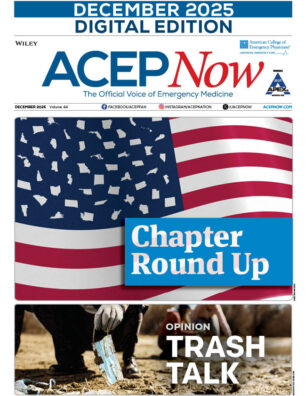Opioid addiction is not just a problem among adults in the United States. A new study shows that an increasing number of children seen in the emergency department (ED), more than 100 each day, test positive for opioid addiction or dependency.
“We think, in all honestly, that this is probably just the tip of the iceberg, because we have only looked at this through the lens of the ED,” Dr. Veerajalandhar Allareddy from University of Iowa Stead Family Children’s Hospital noted in an interview with Reuters Health. These are children and adolescents who came to the ED for any cause, and “for whatever reason, the physician was concerned enough about the potential for opioid abuse or dependence that they test them. So the number could be much larger if physicians don’t suspect it,” he said.
Dr. Allareddy presented the study September 18 at the American Academy of Pediatrics (AAP) National Conference in Chicago, Illinois.The researchers analyzed data from the Nationwide Emergency Department Sample, the largest all-payer ED database in the United States. During the study period (2008-2013), 257,165 ED visits with opioid dependence or abuse diagnosis codes were made by individuals age 21 or younger.
The number of pediatric patients testing positive for opioid addiction or dependency in the ED jumped between 2008 and 2013, from 32,235 to 49,626. The vast majority of these visits involved individuals age 18 to 21 (88 percent), with about 8 percent made by those age 16 to 17. Males made up more than half of the visits (56 percent).
“About 117 children test positive for opioid abuse or dependence every day across emergency departments in the United States,” the authors report in their meeting abstract. “In our opinion, this is a pediatric public health crisis,” Dr. Allareddy said in a conference news release.
After the ED visit, 31 percent of children were admitted as inpatients. “What we don’t know is whether they were admitted because of the opioid abuse or because of what they came to the ED for, such as trauma. And for the two thirds who were discharged, was there sufficient follow-up for their opioid abuse? We don’t know,” Dr. Allareddy told Reuters Health.
“This was intended to be an exploratory study, one that we hope will help alert the public, researchers, and policymakers of the need to fully define and address this important, emerging public health problem among children in the United States,” he added in the release.
A related study presented at the conference suggests that common surgeries may serve as a gateway to nonmedical opioid use in adolescents. It found that adolescents commonly fill post-surgery opioid prescriptions for months beyond the typical recovery time.
Dr. Calista Harbaugh, from the University of Michigan C.S. Mott Children’s Hospital and the Michigan Opioid Engagement Network, and colleagues retrospectively studied more than 88,000 privately insured patients (mean age, 17) who underwent one of 13 common surgeries for this age group. None of the patients had been prescribed an opioid before surgery. The incidence of new, persistent opioid use after surgery was 4.8 percent, ranging from 2.7 percent to 15.2 percent across procedures, compared to 0.1 percent in a nonoperative control sample.
Persistent opioid use was defined as continued prescription refills 90 to 180 days after surgery and beyond what is expected after routine surgery. Colectomy, supracondylar fracture fixation, cholecystectomy, and umbilical or epigastric hernia repair were among the procedures associated with the highest risk of new, persistent opioid use.
“This is a hypothesis-generating study. We can’t say if these adolescents are taking the opioids; we can only say they are filling the prescriptions. But we can assume that if they are getting a refill, they probably use them, store them, or give them to someone else,” Dr. Harbaugh noted in an interview with Reuters Health.
“The fact that this many kids are getting additional opioids this far after surgery means we need to be aware of this and watch these kids to make sure it doesn’t lead to a problem in the future. We also need to make sure we communicate among specialties” she added.
Pages: 1 2 | Multi-Page





One Response to “Increasing Number of Children Addicted to Opioids”
October 1, 2017
Stephen GrantSeriously? This study includes everyone under the age of 22 and calls them children. This is the epitome of fake news. Or a very fake headline.